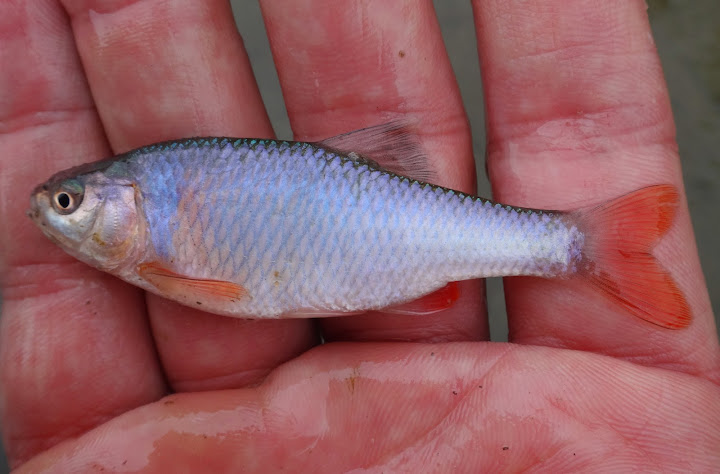Quillback (Carpiodes cyprinus)
Highfin Carpsucker (Carpiodes cyprinus)
Northern Hogsucker (Hypentelium nigricans)
Golden Redhorse (Moxostoma erythrurum)
Shorthead Redhorse (Moxostoma macrolepidotum)
Central Stoneroller (Campostoma anomalum)
Red Shiner (Cyprinella lutrensis) - caught hook & line
Spotfin Shiner (Cyprinella spiloptera)
Emerald Shiner (Notropis atherinoides)
Sand Shiner (Notropis stramineus)
Suckermouth Minnow (Phenacobius mirabilis) - still haven't been able to catch hook & line
Bluntnose Minnow (Pimephales notatus)
Blackstripe Topminnow (Fundulus notatus)
Western Mosquitofish (Gambusia affinis)
Green Sunfish (Lepomis cyanellus)
Bluegill (Lepomis macrochirus)
Smallmouth Bass (Micropterus dolomieu)
Mud Darter (Etheostoma asprigene) - I suspected these have been mixed in with the orangethroats and rainbows I looked at during previous visits
Rainbow Darter (Etheostoma caeruleum)
Fantail Darter (Etheostoma flabellare)
Johnny Darter (Etheostoma nigrum)
Orangethroat Darter (Etheostoma spectabile)
Banded Darter (Etheostoma zonale) - first time finding these in Illinois
Logperch (Percina caprodes)
Blackside Darter (Percina maculata)
Channel Catfish (Ictalurus punctatus)
And also this guy, just for kicks.
Not bad for a creek in the middle of farm country!








